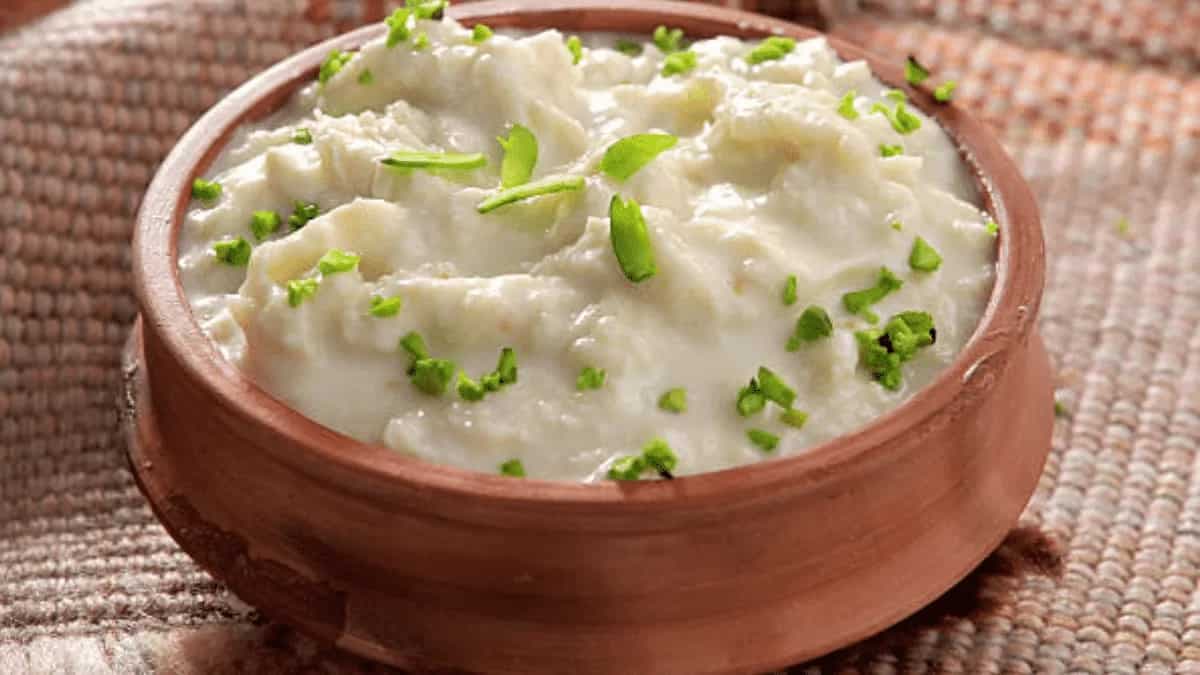The ingredients used in a given recipe may vary depending on the particular region and cultural preferences. For example, payasam is not only made with rice and vermicelli, but also lentils, fruits and vegetables like raw bananas. Some variations of payasam include using different sweeteners, or flavourings. Here is everything you need to know about payasam.
Origin of Payasam
Payasam's history has developed over centuries and is firmly anchored in Indian culinary customs. The idea of making sweet dishes by mixing grains, milk, and sweeteners has long been associated with Indian cuisine, though its exact origins are unknown.
Payasam has traditionally been connected to religious ceremonies, celebrations, and unique events. Offerings of payasam, or sweetened rice, are frequently made in Hindu temples and during religious ceremonies. Sharing payasam is regarded as lucky and is a representation of happiness and plenty. This is especially true for the rice-eating parts of the country, like the Southern and Eastern states.
The idea of making sweet dishes by boiling grains or legumes with milk and sugar substitutes originated in Ayurvedic medicine, where specific concoctions of ingredients were thought to be both tasty and healthful. For a harmonious and nourishing meal, Ayurvedic principles advocate balancing different tastes (sweet, salty, sour, bitter, pungent, and astringent). This is aligned with the use of rice, wheat, or other grains combined with milk and sweeteners.
Further, it is also believed that rice-based payasams are easier to digest, which is why it is tradition in the Indian subcontinent to provide infants with payasam on their first official solid or semi-solid food consumption ritual. Thus, from infancy to old age, the association of payasam with people across the Indian subcontinent remains strong throughout lifetimes and generations.
Area Of Origin
Although the precise origin of payasam is difficult to determine, it has evolved into a staple of Indian cuisine with regional variations. While kheer is more often associated with North India, payasam is considered to be its South Indian-origin dessert. There is a long-standing custom in South India, especially in states like Kerala and Tamil Nadu, of making and relishing payasam on all special occasions, whether they are religious festivals like Onam and Pongal or Sadhya meals at weddings.
It's important to remember, though, that payasam is not limited to South India. All over the nation, there are similar sweet dishes prepared with different combinations of rice, milk, and sweeteners, and each region has its own special preparation techniques and recipes. In India, payasam is a popular dish that is enjoyed in both the northern and southern regions in different ways.
The diversity and appeal of payasam have therefore been greatly enhanced by South India-specific recipes and ingredients, but it would be more accurate to state that payasam has developed and gained acceptance throughout the Indian subcontinent. The dish's origins are closely linked to the nation's larger cultural and gastronomic traditions.
Variations Of Payasam:
Video Credit: Youtube/ Dining Food Court
In Indian cooking, payasam, is a popular and adaptable dessert that is available in a wide range of forms. Variations may arise from differences in ingredients, methods of preparation, or geographic influences across Karnataka, Kerala, Tamil Nadu, Andhra Pradesh and Telangana. Here are a few well-liked payasam varieties:
• Pal Payasam: A traditional rice, milk, and sugar dish from South India. It frequently has cardamom flavouring and nuts as garnish.
• Parippu Pradhaman: Another payasam variant from Kerala, this one is flavoured with ghee, cardamom, and occasionally pieces of coconut. It is made with split chickpeas, jaggery, and coconut milk.
• Semiya Payasam: Also known as Vermicelli Kheer, is a popular dessert in India that is made with roasted vermicelli rather than rice. It is cooked in milk and then sugared or jaggery-sweetened.
• Ada Pradhaman : A traditional payasam from Kerala made with rice flakes (ada), jaggery, and coconut milk. Cardamom is occasionally added for flavour, and coconut pieces are used as a garnish.
• Paal Ada Payasam: A variant from Tamil Nadu, this payasam is made with rice flakes (ada), milk, sugar, and cardamom flavouring.
• Undralla Payasam : A traditional dish from Andhra Pradesh, Undralla Payasam is made with cashews, cardamom, coconut milk, ghee, undrallu (steamed rice flour balls), and jaggery.
• Moong Dal Payasam: A well-known South Indian dessert, moong dal payasam is made with split green Grammes, coconut milk, ghee, cardamom, and cashews, along with jaggery or sugar.
• Javvarisi Payasam : Tapioca pearls, javvarisi (sago or tapioca pearls), milk, sugar, ghee, cardamom, and cashews are the ingredients used to make Javvarisi Payasam.


